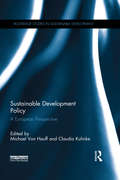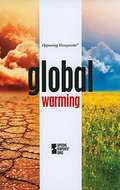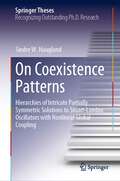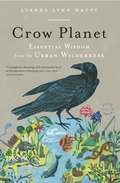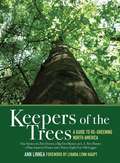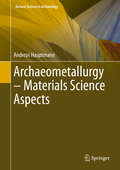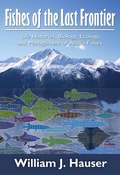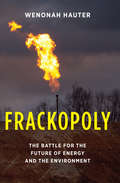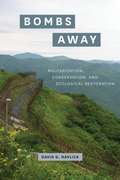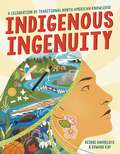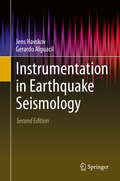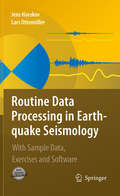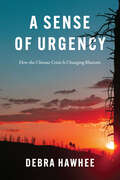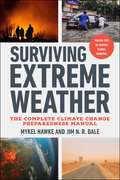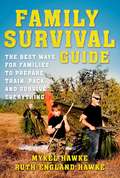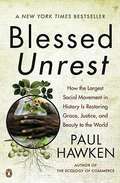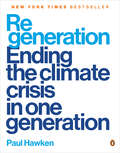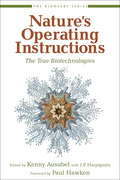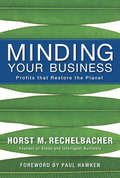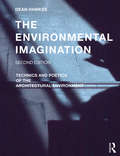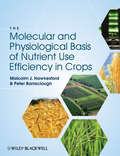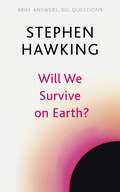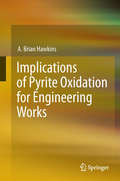- Table View
- List View
Sustainable Development Policy: A European Perspective (Routledge Studies in Sustainable Development)
by Michael Von Hauff Claudia KuhnkeSustainable Development Policy: A European Perspective uses a variety of multidisciplinary perspectives to explore the ways in which sustainable infrastructures can play a more prominent and effective role in international development policy. Building on a solid introduction to sustainability and development policy, this book discusses ways in which viable reform can be promoted through coherent governing, the design of social security systems, education systems and the possibilities of fair trade as an alternative trading concept . Sustainable Development Policy generates a platform on which to encourage constructive dialogue on issues surrounding sustainability in the wake of the global scarcity of natural and economic resources. This edited collection will be of great interest to all students and lecturers of development studies and development policy, as well as researchers from other disciplines looking for an introduction to sustainable development policy and its practical applications.
Global Warming (Opposing Viewpoints)
by David M. HaugenThe book discusses the opposing views on the subject of Global Warming under the heads: Is Global Warming a Real Phenomenon?, What Causes Global Warming?, What Is the Impact of Global Warming?, and How Can Global Warming Be Mitigated?
On Coexistence Patterns: Hierarchies of Intricate Partially Symmetric Solutions to Stuart-Landau Oscillators with Nonlinear Global Coupling (Springer Theses)
by Sindre W. HauglandThis book is about coexistence patterns in ensembles of globally coupled nonlinear oscillators. Coexistence patterns in this respect are states of a dynamical system in which the dynamics in some parts of the system differ significantly from those in other parts, even though there is no underlying structural difference between the different parts. In other words, these asymmetric patterns emerge in a self-organized manner. As our main model, we use ensembles of various numbers of Stuart-Landau oscillators, all with the same natural frequency and all coupled equally strongly to each other. Employing computer simulations, bifurcation analysis and symmetry considerations, we uncover the mechanism behind a wide range of complex patterns found in these ensembles. Our starting point is the creation of so-called chimeras, which are subsequently treated within a new and broader context of related states.
Crow Planet: Essential Wisdom from the Urban Wilderness
by Lyanda Lynn HauptThere are more crows now than ever. Their abundance is both an indicator of ecological imbalance and a generous opportunity to connect with the animal world. CROW PLANET reminds us that we do not need to head to faraway places to encounter "nature." Rather, even in the suburbs and cities where we live we are surrounded by wild life such as crows, and through observing them we can enhance our appreciation of the world's natural order. CROW PLANET richly weaves Haupt's own "crow stories" as well as scientific and scholarly research and the history and mythology of crows, culminating in a book that is sure to make readers see the world around them in a very different way.
Keepers of the Trees: A Guide to Re-Greening North America: True Stories of a Tree Doctor, a Big Tree Hunter, an L.A. Tree Planter, a Plant Amnesty Pruner, and a Ninety-Eight-Year-Old Logger
by Lyanda Lynn Haupt Ann LinneaEngage in the life stories of fourteen people whose lives have been shaped by trees-featuring the true stories of a tree doctor, big tree hunter Will Blozan, Plant Amnesty's pruner, and ninety-four-year-old logger Merve Wilkinson. Also interviewed is Vietnam veteran Bud Pearson, whose post-traumatic stress disorder found healing and acceptance as a wood carver in the wilds of Montana, as well as Andy Lipkis, founder of TreePeople, who has spent thirty-five years ripping up concrete in L.A. to plant over two million trees in an effort to stop flooding and reduce air pollution. Each tree keeper reveals the inspiration and organization behind their advocacy with detailed explanations and touching stories of how their lives have come to be shaped by the forests they are fighting to preserve. Keepers of the Trees includes stories from all over North America, including Vancouver, Chicago, L.A., and Montana. This book includes one hundred color photographs of the tree keepers in action as well as diagrams illustrating the keepers' work. These are inspirational stories of conservation, healing, passion, and advocacy for any classroom, conservationist, activist, and nature lover.
Archaeometallurgy – Materials Science Aspects (Natural Science in Archaeology)
by Andreas HauptmannThis book successfully connects archaeology and archaeometallurgy with geoscience and metallurgy. It addresses topics concerning ore deposits, archaeological field evidence of early metal production, and basic chemical-physical principles, as well as experimental ethnographic works on a low handicraft base and artisanal metal production to help readers better understand what happened in antiquity. The book is chiefly intended for scholars and students engaged in interdisciplinary work.
Fishes of the Last Frontier: Life Histories, Biology, Ecology, and Management of Alaska's Fishes
by Bill HauserFishes of the Last Frontier answers many of your fish questions and others you haven't even thought of yet in a nontechnical, plain talk voice. Learn about the fishes that are of value or special interest to Alaskans: how fish are able to survive and grow, how they get along with each other--or not--and what they eat, where and how our Alaska fishes spawn, the difference between a red and a redd, and the difference between anadromous and catadromous and why that is important. The author, a fishery scientist with nearly 50 years of experience and training, including more than 30 years in Alaska, describes the life history characteristics of 43 species of fishes valuable or important in some way to Alaskans. He delves into various aspects of biology and ecology of fish and provides insight into how humans and fish interact. The processes of fishery management in Alaska are described. Fishes of the Last Frontier includes fishes from throughout Alaska in fresh, brackish, and marine waters and sport, commercial, and subsistence fisheries. Learn not just how anadromous fish find their way home but also how scientists were able to learn the details. Nontechnical readers have reported the presentations as enjoyable, understandable, and informative.
Frackopoly: The Battle for the Future of Energy and the Environment
by Wenonah Hauter&“The definitive story on how big oil and gas corporations captured our political system . . . and the growing grassroots movement to retake our democracy&” (Mark Ruffalo). Over the past decade a new and controversial energy extraction method known as hydraulic fracturing, commonly referred to as fracking, has rocketed to the forefront of US energy production. With fracking, millions of gallons of water, dangerous chemicals, and sand are injected under high pressure deep into the earth, fracturing hard rock to release oil and gas. Wenonah Hauter, one of the nation&’s leading public interest advocates, argues that the rush to fracking is dangerous to the environment and treacherous to human health. Frackopoly describes how the fracking industry began; the technologies that make it possible; and the destruction and poisoning of clean water sources with the release of harmful radiation from deep inside shale deposits, creating what the author calls &“sacrifice zones&” across the American landscape. The book also examines the powerful interests that have supported fracking, including leading environmental groups, and offers a thorough debunking of its supposed economic benefits. With a wealth of new data, Frackopoly is an essential and riveting read for anyone interested in protecting the environment and ensuring a healthy and sustainable future for all Americans. &“A passionate history and critique of the energy industry, from Standard Oil to Enron . . . . [A] journalistic exposé of fracking outrages in which aggressive entrepreneurs in pursuit of profits wreak havoc on the land and poison the water.&” —Kirkus Reviews &“A truly powerful manifesto about one of the greatest environmental fights on our planet today—from one of its greatest champions!&” —Bill McKibben, environmentalist and author of Oil and Honey
Bombs Away: Militarization, Conservation, and Ecological Restoration
by David G. HavlickWhen viewed from space, the Korean Peninsula is crossed by a thin green ribbon. On the ground, its mix of dense vegetation and cleared borderlands serves as home to dozens of species that are extinct or endangered elsewhere on the peninsula. This is Korea’s demilitarized zone—one of the most dangerous places on earth for humans, and paradoxically one of the safest for wildlife. Although this zone was not intentionally created for conservation, across the globe hundreds of millions of acres of former military zones and bases are being converted to restoration areas, refuges, and conservation lands. David G. Havlick has traveled the world visiting these spaces of military-to-wildlife transition, and in Bombs Away he explores both the challenges—physical, historical, and cultural—and fascinating ecological possibilities of military site conversions. Looking at particular international sites of transition—from Indiana’s Big Oaks National Wildlife Refuge to Cold War remnants along the former Iron Curtain—Havlick argues that these new frontiers of conservation must accomplish seemingly antithetical aims: rebuilding and protecting ecosystems, or restoring life, while also commemorating the historical and cultural legacies of warfare and militarization. Developing these ideas further, he shows that despite the ecological devastation often wrought by military testing and training, these activities need not be inconsistent with environmental goals, and in some cases can even complement them—a concept he calls ecological militarization. A profound, clear explication of landscapes both fraught and fecund, marked by death but also reservoirs of life, Bombs Away shows us how “military activities, conservation goals, and ecological restoration efforts are made to work together to create new kinds of places and new conceptions of place.”
Indigenous Ingenuity: A Celebration of Traditional North American Knowledge
by Deidre Havrelock Edward KayCelebrate Indigenous thinkers and inventions with this beautifully designed, award-winning interactive nonfiction book—perfect for fans of Braiding Sweetgrass." Essential for kids and adults. We need this book." —Candace Fleming, award-winning author of The Rise and Fall of Charles Lindbergh and The Family Romanov Corn. Chocolate. Fishing hooks. Boats that float. Insulated double-walled construction. Recorded history and folklore. Life-saving disinfectant. Forest fire management. Our lives would be unrecognizable without these, and countless other, scientific discoveries and technological inventions from Indigenous North Americans. Spanning topics from transportation to civil engineering, hunting technologies, astronomy, brain surgery, architecture, and agriculture, Indigenous Ingenuity is a wide-ranging STEM offering that answers the call for Indigenous nonfiction by reappropriating hidden history. The book includes fun, simple activities and experiments that kids can do to better understand and enjoy the principles used by Indigenous inventors. Readers of all ages are invited to celebrate traditional North American Indigenous innovation, and to embrace the mindset of reciprocity, environmental responsibility, and the interconnectedness of all life. An NCTE Orbis Pictus Honor Book An American Association of Geography Recommended Book A National Education Society Read Across America Selection A Canadian Children&’s Book Centre Best Books for Kids & TeensA School Library Journal Best Book of the Year A Shelf Awareness Gift Guide SelectionA Junior Library Guild Selection
Instrumentation in Earthquake Seismology
by Jens Havskov Gerardo AlguacilThis work provides an up-to-date overview of modern instruments used in earthquake seismology as well as a description of theoretical and practical aspects of seismic instrumentation. The main topics are: * Choosing and installing equipment for seismic stations * Designing and setting up seismic networks and arrays * Maintaining and calibrating seismic instruments It also provides detailed descriptions of the following: * Seismic sensors * Digitizers * Seismic recorders * Communication systems * Software used for seismic station and networks In this second edition, new seismic equipment is presented and more comprehensive sections on topics like MEMS accelerometers, sigma-delta AD converters, dynamic range discussion and virtual networks have been included. This book is primarily intended for seismologists, engineers and technicians working with seismological instruments. It combines practical "know-how" with sufficient theory to explain the basic principles, making it also suitable for teaching students the most important aspects of seismic instrumentation. The book also gives a current overview of the majority of instruments and instrument manufacturers on the market, making it easy to compare the capability of instruments from different sources. SEISAN software was used for several examples in the book. This widely extended seismic analysis software is freely available from the University of Bergen website. The content of this book draws on the authors' (a seismologist and a physicist) combined experience of working in this field for more than 35 years.
Routine Data Processing in Earthquake Seismology
by Jens Havskov Lars OttemollerThe purpose of this book is to get a practical understanding of the most common processing techniques in earthquake seismology. The book deals with manual methods and computer assisted methods. Each topic will be introduced with the basic theory followed by practical examples and exercises. There are manual exercises entirely based on the printed material of the book, as well as computer exercises based on public domain software. Most exercises are computer based. The software used, as well as all test data are available from http://extras.springer.com. This book is intended for everyone processing earthquake data, both in the observatory routine and in connection with research. Using the exercises, the book can also be used as a basis for university courses in earthquake processing. Since the main emphasis is on processing, the theory will only be dealt with to the extent needed to understand the processing steps, however references will be given to where more extensive explanations can be found. Includes: * Exercises * Test data * Public domain software (SEISAN) available from http://extras.springer.com
Why Frogs Are Wet (Let's-Read-and-Find-Out Science 2)
by Judy HawesRead and find out about frogs in this colorfully illustrated nonfiction picture book.Frogs can jump thirty times their own body length, catch insects on the wing, and breathe underwater or on land. But they must always keep their skins wet. Read and find out why! This is a clear and appealing science book for early elementary age kids, both at home and in the classroom. It's a Level 2 Let's-Read-and-Find-Out, which means the book explores more challenging concepts for children in the primary grades. The 100+ titles in this leading nonfiction series are:hands-on and visualacclaimed and trustedgreat for classroomsTop 10 reasons to love LRFOs:Entertain and educate at the same timeHave appealing, child-centered topicsDevelopmentally appropriate for emerging readersFocused; answering questions instead of using survey approachEmploy engaging picture book quality illustrationsUse simple charts and graphics to improve visual literacy skillsFeature hands-on activities to engage young scientistsMeet national science education standardsWritten/illustrated by award-winning authors/illustrators & vetted by an expert in the fieldOver 130 titles in print, meeting a wide range of kids' scientific interestsBooks in this series support the Common Core Learning Standards, Next Generation Science Standards, and the Science, Technology, Engineering, and Math (STEM) standards. Let's-Read-and-Find-Out is the winner of the American Association for the Advancement of Science/Subaru Science Books & Films Prize for Outstanding Science Series.
A Sense of Urgency: How the Climate Crisis Is Changing Rhetoric
by Debra HawheeA study of how the climate crisis is changing human communication from a celebrated rhetorician. Why is it difficult to talk about climate change? Debra Hawhee argues that contemporary rhetoric relies on classical assumptions about humanity and history that cannot conceive of the present crisis. How do we talk about an unprecedented future or represent planetary interests without privileging our own species? A Sense of Urgency explores four emerging answers, their sheer novelty a record of both the devastation and possible futures of climate change. In developing the arts of magnitude, presence, witness, and feeling, A Sense of Urgency invites us to imagine new ways of thinking with our imperiled planet.
Surviving Extreme Weather: The Complete Climate Change Preparedness Manual
by Mykel Hawke Jim N.R. DaleThe only guide you need to prepare for the dangerous effects of climate change. The world has changed, and impacts of global warming means weather events like extreme heat, wildfires, hurricanes, and droughts are now being felt by all of us. We can ignore climate change no longer and must prepare ourselves to survive in new conditions. The key to surviving extreme weather events is to understand them from a practical perspective and then plan and execute tactical responses. In Surviving Extreme Weather, Mykel Hawke, a renowned survivalist and bestselling author of Hawke&’s Special Forces Survival Handbook and Hawke&’s Green Beret Survival Manual, and British meteorologist Jim N. R. Dale, share their expert knowledge and personal experiences while offering valuable insights into the science behind our new weather and how to apply situational awareness, preparedness, and psychology to survive.Surviving Extreme Weather: The Complete Climate Change Preparedness Manual is categorized by elements—fire, water, wind, and earth—events are explained with recommendations anyone can follow to protect themselves and their family, and to minimize the risks of damage to life and property. Included are lists of items every person, home, business, and vehicle should always stock, such as: first aid kits, afflictions, and applications; emerging technologies to help protect against different weather phenomena; structural and landscape precautions and improvements; philosophies to help family, friends, and neighbors get through any environmental ordeal.
Family Survival Guide: The Best Ways for Families to Prepare, Train, Pack, and Survive Everything
by Mykel Hawke Ruth England HawkeAre you prepared in case disaster strikes? Are your kids? In the Family Survival Guide, veteran adventurers Mykel and Ruth Hawke provide the vital information you and your family need to get through almost any disaster safely. The topics covered are wide-ranging and easy-to-follow. Here, you and your family will learn: How to find, purify, and store water How to construct different types of shelter and the perfect places to build them What to pack and what not to pack in a bugout bag Essential first aid skills How to navigate your way when lost How to build a fire Basic foraging, hunting and outdoor cooking skills And so much more! Filled with expert advice and time-tested tips, Family Survival Guide is an essential handbook
Blessed Unrest
by Paul HawkenOrganizations working to restore the environment and foster social justice collectively comprise the largest movement on earth. This movement with no name, leader, or location is a creative expression of people's needs worldwide.
The Ecology of Commerce: A Declaration of Sustainability
by Paul HawkenA visionary new program that businesses can follow to help restore the planet.
Regeneration: Ending the Climate Crisis in One Generation
by Paul HawkenA radically new understanding of and practical approach to climate change by noted environmentalist Paul Hawken, creator of the New York Times bestseller DrawdownRegeneration offers a visionary new approach to climate change, one that weaves justice, climate, biodiversity, equity, and human dignity into a seamless tapestry of action, policy, and transformation that can end the climate crisis in one generation. It is the first book to describe and define the burgeoning regeneration movement spreading rapidly throughout the world. Regeneration describes how an inclusive movement can engage the majority of humanity to save the world from the threat of global warming, with climate solutions that directly serve our children, the poor, and the excluded. This means we must address current human needs, not future existential threats, real as they are, with initiatives that include but go well beyond solar, electric vehicles, and tree planting to include such solutions as the fifteen-minute city, bioregions, azolla fern, food localization, fire ecology, decommodification, forests as farms, and the number one solution for the world: electrifying everything. Paul Hawken and the nonprofit Regeneration Organization are launching a series of initiatives to accompany the book, including a streaming video series, curriculum, podcasts, teaching videos, and climate action software. Regeneration is the inspiring and necessary guide to inform the rapidly spreading climate movement.
Nature's Operating Instructions
by Paul Hawken Kenny Ausubel J. P. HarpigniesArchiving ancient corn strains to guard against genetic pollution? Coating chainsaw blades with mushroom spores to speed forest regeneration? Growing crops that literally suck heavy metals out of damaged soil? These are not utopian fantasies but proven strategies developed by experts who understand that working with living systems, rather than suppressing them, is the key to creating a sustainable future.For this second volume in Sierra Club Books' Bioneers Series, Bioneers founder Kenny Ausubel has gathered reports from scientific innovators in fields such as biomimicry (mimicking nature to restore environments and transform production processes); "living technologies" that break down toxics biologically; and ecologically sound design for industries and buildings. These are set alongside essays by visionaries like Paul Hawken, Terry Tempest Williams, and Michael Pollan that underscore the urgent need for working in harmony with nature's intelligent design. Unlike the corporatized genetics that claims the name "biotechnology," the true biotechnologies surveyed here illuminate a future of hope by "wedding human ingenuity with the wisdom of the wild," in the words of contributor John Todd. Sector by sector-from energy and agriculture to transportation and land management-this book shows how we can emulate and adapt nature's operating instructions to the benefit of all life on Earth.
Minding Your Business
by Paul Hawken Horst RechelbacherThe business world is at a crisis point- the bubble is going to burst soon. New ways of doing business have to be found. We can't keep repeating the past or the present. Rechelbacher contends that the biggest business opportunities for the next century will come from practicing environmentally sound, sustainable business that is in harmony with the rhythms of the natural world. The first step in this process is aligning ourselves with the natural world. By managing our personal lives as if they were corporations and putting them in line with what we observe in nature, we will be able to align our businesses with the environment as well, reaping the rewards of a healthy, sustainable abundance.
The Environmental Imagination: Technics and Poetics of the Architectural Environment
by Dean HawkesThe Environmental Imagination explores the relationship between tectonics and poetics in environmental design in architecture. Working thematically and chronologically from the eighteenth century to the present day, this book redefines the historiography of environmental design by looking beyond conventional histories to argue that the environments within buildings are a collaboration between poetic intentions and technical means. In a sequence of essays, the book traces a line through works by leading architects of the nineteenth and twentieth centuries that illustrate the impact of new technologies on the conception and realisation of environments in buildings. In this, a consideration of the qualitative dimension of environment is added to the primarily technological narratives of other accounts. In this second edition, the book has been substantially rewritten and restructured to include further research conducted in the decade since the first edition. A number of important buildings have been revisited, in order to extend the descriptions of their environments, and studies have been made of a number of newly studied, significant buildings. A completely new essay offers an environmental interpretation of Luis Barragán’s magical own house in Mexico City and the earlier studies of buildings by Peter Zumthor have been gathered into a single, extended essay that includes a body of new research. On the fiftieth anniversary of the publication of Reyner Banham’s, The Architecture of the Well-tempered Environment, the book concludes with a critical tribute to that seminal text. The Environmental Imagination will appeal to academics and practitioners with interests in the history, theory and technology of architecture.
The Molecular and Physiological Basis of Nutrient Use Efficiency in Crops
by Malcolm J. Hawkesford Peter BarracloughEfforts to increase efficient nutrient use by crops are of growing importance as the global demand for food, fibre and fuel increases and competition for resources intensifies. The Molecular and Physiological Basis of Nutrient Use Efficiency in Crops provides both a timely summary of the latest advances in the field as well as anticipating directions for future research. The Molecular and Physiological Basis of Nutrient Use Efficiency in Crops bridges the gap between agronomic practice and molecular biology by linking underpinning molecular mechanisms to the physiological and agronomic aspects of crop yield. These chapters provide an understanding of molecular and physiological mechanisms that will allow researchers to continue to target and improve complex traits for crop improvement.Written by leading international researchers, The Molecular and Physiological Basis of Nutrient Use Efficiency in Crops will be an essential resource for the crop science community for years to come.Special Features:coalesces current knowledge in the areas of efficient acquisition and utilization of nutrients by crop plants with emphasis on modern developments addresses future directions in crop nutrition in the light of changing climate patterns including temperature and water availability bridges the gap between traditional agronomy and molecular biology with focus on underpinning molecular mechanisms and their effects on crop yield includes contributions from a leading team of global experts in both research and practical settings
Will We Survive on Earth? (Brief Answers, Big Questions)
by Stephen Hawking'Be brave, be curious, be determined, overcome the odds. It can be done'Will we survive on Earth?Should we colonise space?Throughout his extraordinary career, Stephen Hawking expanded our understanding of the universe and unravelled some of its greatest mysteries. In Will We Survive on Earth? the world-famous cosmologist and bestselling author of A Brief History of Time turns his attention to one of the most urgent issues for humankind and explores our options for survival.'Effortlessly instructive, absorbing and witty' GuardianBrief Answers, Big Questions: this stunning paperback series offers electrifying essays from one of the greatest minds of our age, taken from the original text of the No. 1 bestselling Brief Answers to the Big Questions.
Implications of Pyrite Oxidation for Engineering Works
by A. Brian HawkinsThe book highlights and analyses the distress to buildings caused by sulphate-induced heave, with particular reference to the recent problems in the Dublin area of Ireland. It describes the formation of pyrite, the processes involved in its oxidation and the various ways in which consequential expansion takes place. For the first time in the literature it discusses the way that buildings can be raised above their supporting foundation walls by the expansion of pyritiferous fill which has been used beneath ground-bearing floor slabs in Ireland. The significance of fractures through the iron sulphide microcrystals for the rate and extent of oxidation is discussed. Photographs and profiles of sulphate ingress into concrete/concrete blocks are presented. Case histories from the UK, North America and Ireland are discussed.
